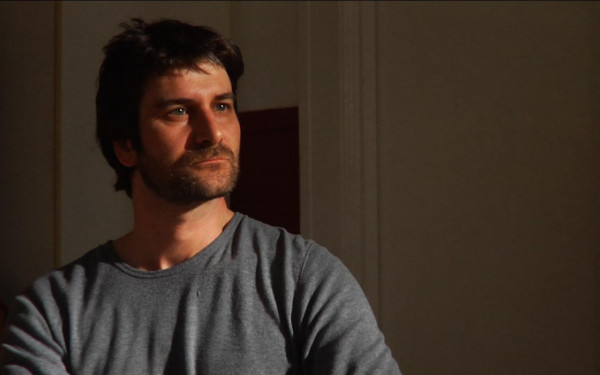It’s All Gone to Pot
A Concordia Student’s Wild Adventure in the Business of Getting Buzzed
After a week of solid hitchhiking north on the Pacific coast highway from San Francisco, I landed in Arcata, a relatively large coastal town 50 miles south of the Oregon border whose 20,000 residents mostly consist of students enrolled at Humboldt State University. To the west of Arcata lie the windy beaches of the Pacific Ocean, to the east, a vast expanse of ancient Redwood trees.
It was a sunny and warm day in early October as I walked across G Street to the grassy plaza where a group of pregnant women with dread locks and homemade clothing were swirling hula hoops around their protruding bellies.
Mulling around the periphery were a few dozen transient types with dirty clothes, wild eyes and the pungent scent of patchouli wafting around their mad auras.
The reason most of us were there was the annual gold rush of the marijuana harvest season which had just kicked off. There was
work to be done and a big stack of cash to be had if you played your cards right.
Arcata is a well-known, major portal for pot farmers. Growers often come to recruit ‘trimmers” and general labourers for the crops in the neighbouring single-traffic-light mountain towns scattered for miles around.
The going rate for trimming (cutting water leaf off the buds to make them market-ready) was $200 per pound trimmed. If you were good, people said, you could trim over two pounds a day. The nature of the beast attracted thousands of kids from all over the world as they descended on the so-called Emerald Triangle of the Humboldt, Trinity and Mendocino counties each year hoping to make a tax-free fortune in the span of a few months.
Opportunity for Growth
After ten days in Arcata, having exhausted my couchsurfing.org hosts with no solid leads for work, I decided to move on to some of the smaller towns where most of the growers actually lived and produced their livelihood.
A three-hour ride on a Redwood Transit bus took me to the small yet bustling town of Garberville, which had a population of about 2,400 and whose retail centres all seemed to revolve around this specialized agriculture.
I got to know many of the locals, as I would busk with my electric guitar and battery-powered amplifier during the sunny days and passed time in the evenings at cafes with some good-natured travellers who were in similar straits.
Nights were spent at the camp-site down in the forest by Eel River where we would trade stories around the fire, drinking gigantic cans of Budweiser and passing joints around.
One day, a conspicuous European who had been tagging along with various groups around town was publicly called out as a narc by one of the young transients when he refused to show his passport to anyone (which I was told has some kind of marker for agents). We all had our suspicions of him and weren’t surprised when he disappeared the following day.
I passed close to two weeks before being offered a job by a Hawaiian woman in her sixties who introduced herself by her name and astrological sign in the same breath. Her kind nature was a relief, as I had heard rumours about the Mexican cartels who had farms in the area, recruiting young vagabonds and blind-folding them en route to the ranches where they would be subjected to severe conditions, the girls being sold into slavery afterwards and the men being beaten or murdered or just tossed back into town after several months of labour without payment.
My maternally-inclined Hawaiian employer was exactly the sort we were all seeking and I was very relieved when she approached me. Her house was a close walk to the grocery store and her backyard housed twenty-six plants (which I was told were licensed) of varying shapes and colours.
I spent eight hours each day ripping off the large water-leaves from the plants and then amputating the branches and hanging them from wire line on the porch to dry before the buds were clipped off and ready for trimming.
When manicured of their waterleaves, the plants had a breathtaking aesthetic quality to them, each bud resembling crystallised moss.
It was also amusing to observe the unusual height of the fences surrounding nearly every property on her block, which scaled to ten feet or more, and still you could occasionally see the leafy stalks jutting out above them if you were standing at the right angle.
The work there only lasted five days but I was fed organic, home-made meals and paid a fine wage. In a wonderful coincidence, the first night I had a roof of any kind over my head in several weeks coincided with the first rains of the season.Celebrity Stash
On the last day in Garberville, I received word from a Kansan girl I had met in Arcata that the green light had been given for me to come work at the co-op where she was, far out in the hills of Trinity, the next county over.
After saying goodbye to the nice lady who had taken a chance on me, I hitchhiked a few hours to the town I was told of which was roughly the same as Garberville in size and appearance.
The single bus stop there was directly in front of a building that had previously been used as a community centre and which was now owned by the co-operative I would be working for, operating as their headquarters.
The dozen or so growers that were involved had about twenty ranches in the area, producing over 1,500 pounds per harvest season. On the gates of every driveway leading to the ranches were signs stating that the cannabis being grown on the premises was sanctioned legally by the state and any unauthorized entry would be met with prosecution. The Beware of Dog notices were no idle threat, nor were the firearms stowed on the premises.
That night I was brought to one such ranch where I was introduced to a young man named Gerald, who had been put in charge of raising the crop on the property that season.
It was the only time in the next six weeks that I’d see alcohol consumed in excess on any of the ranches. He stumbled as he gave me a tour of the grounds. The trailer adjacent to our sleeping trailer acted as the processing facility where the bud was spread out on wire mesh. There was a small wood-burning fireplace where Gerald built roaring fires.
He spun stories about a legendary man who had founded the co-op. Matthew had many famous friends who owned property in the area. Woody Harrelson and Willie Nelson came by regularly and attended the annual one-pound-buy-in poker game held at the headquarters. After a time, Gerald went silent and began passing out from the tequila and toonie-thick blunt that was going around when I arrived. He wandered off to bed and I followed suit, believing the fireplace was secure. I was wrong.
Blaze Up
At about three o’clock in the morning, we woke up to a loud explosion, glass shattering and the toxic smell of burning plastic. The 60-foot-long processing trailer, fifteen feet from where we were sleeping was a raging inferno, flames jutting out the windows and melting the plastic siding of our trailer.
The soon-to-be-collapsing mass of aluminum and wood contained the $10,000 trimming machine, at least 200 pounds of product with a market value of over $500,000 and several propane tanks of varying fullness. The trailer itself was an insured rental, but there was no insurance on the crop (though this kind of insurance does exist for cannabis).
We forced the hot, melting door of our living quarters open, confronting the flames and hoping another of the tanks inside would not also explode as we ran to seek shelter behind a large mound of dirt 30 feet away.
Gerald called Matthew, who told him to call the fire department. Matthew was astonishingly calm when he arrived and introduced himself to me with a fist bump and a smile, appearing only concerned with our well-being with no mention to us of the lost revenue.
In the days following the fire I was taken to various ranches to work, none of which had running water or electricity apart from generators. I worked alongside a rotating cast of characters, mostly in their early twenties, who came up from the Bay area. We would work in the gardens when it was warm or in the greenhouses or trailers on the colder days, sitting for hours with plastic tote lids on our laps snipping buds with specially designed scissors called fiskars.
When either your hands or fiskars would be so covered with the sticky black tar of accumulated crystals (known as finger hash) that you couldn’t manage any longer, you simply scraped it off or balled it up between your hands which would then be put in a pipe and smoked. After weeks of this, your hands begin to look like a coal-miner’s and you would suddenly realize you were covered in plant material.
Out of necessity, I had been forced to return to the partially melted trailer for a week and a half after the fire to sleep, always stepping out in the morning to the eerie steel framed carcass with a headache from the dehydration, the amount of smoke I’d consumed the previous day and the leftover fumes of burned plastic.
I resolved that complaints of discomfort by a newcomer such as myself would be reserved only for when food or drinking water was low or when the seventh day without a shower came around.
The night before I was to catch my plane back home at the beginning of December, I spent the evening at the co-op headquarters with Matthew. We smoked a large, beautiful chunk of blonde hash and I listened quietly as he told tales of the old days when Humboldt and Trinity were almost untouched and land could be purchased for next to nothing, the law completely unaware of their activities.
Scores of the hippies of the sixties and seventies claimed it as their own and raised families there whom had now taken over the business, continuing it in the same spirit of peace and harmony that the previous generation had founded it on.
After leaving the co-op and returning to Canadian urban society, I remember it almost like an
alternate dimension, where almost everybody co-exists in some facet of illegality. The peaceful nature of the people I had met reminded of a line in a Dylan song which says “To live outside the law you must be honest.” True enough.
This article originally appeared in Volume 31, Issue 23, published February 15, 2011.

web__900_300_90.jpg)
_600_832_s.png)



WEB_600_375_90_s_c1.jpg)